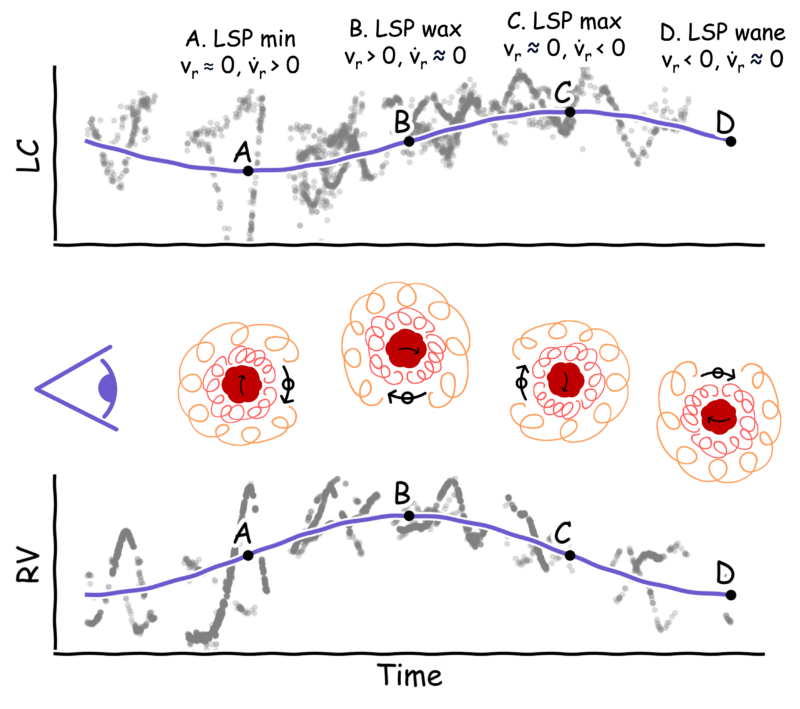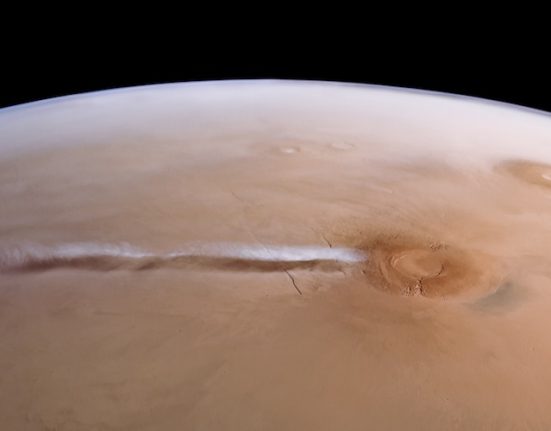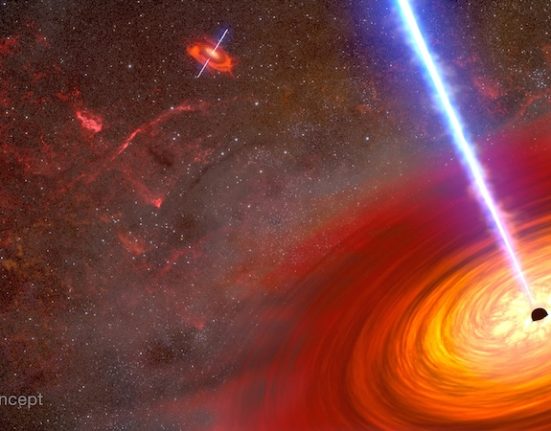
- Betelgeuse might not be one star, but two! The smallest star could have 1.7 times the mass of our Sun.
- Betelgeuse suffered a “great dimming” In recent years, some astronomers have thought it might be on the verge of exploding as a supernova. But now a team of astronomers believes the smaller star plays a role in Betelgeuse's variability.
- If Betelgeuse has a companion, It could mean that this star (the closest red supergiant to Earth, at 427 light-years) will not go supernova for a long time.
Betelgeuse may have a friend
A detailed analysis of the light curve – the record of starlight waxing and waning – for the old red supergiant star Betelgeuse has revealed the possibility of a second star in the system. In other words, the single point of light we see as Betelgeuse could be 2 stars, the smaller one being about 1.7 times the mass of our sun. If this is so… is the explosion of Betelgeuse a supernova Is it yet to happen?
Betelgeuse is a variable starIt periodically changes brightness and sometimes has irregular light changes. In recent years it has suffered periods of darkeningwhich has led astronomers to speculate that Betelgeuse, which is the closest red supergiant To Earth in 427 light years far away – could be on the verge of going supernova.
Before Betelgeuse's Great Dimming in 2019, astronomers said that yes, Betelgeuse was going to explode, but maybe not for thousands of years.

The desynchronized variation of Betelgeuse
A trio of astronomers investigated a 2,170-day cycle of darkening and brightening of Betelgeuse. These scientists describe a long secondary period variation, which is not unusual for stars of Betelgeuse's class. However, the most common explanation for the long secondary periods tends to be that the stars are in binary systems. And, they say, this explanation is especially likely for Betelgeuse.
Variable stars like Betelgeuse legumesThey literally get bigger and smaller over time. We can study Betelgeuse's variability in part by a technique called radial velocitythe motion of something in space (in this case, the motion of Betelgeuse's outer surface) toward or away from us. But at Betelgeuse, the radial velocity variation does not line up with that of the star. light curvethe measure of its increase and decrease in brightness. It's as if someone were clapping in exactly the wrong rhythm.
Authors of the article – astronomers Jared A. Goldberg, Meridith Joyce and Laszlo Molnar – they claim that this lack of synchronization is irrefutable proof. Betelgeuse, they said, is not alone:
Phase difference between light curve and radial velocity requires a companion to be behind Betelgeuse at the minimum luminosity of the long secondary period…
In other words, they said, Betelgeuse is brightest when the red supergiant star and its hypothetical little friend shine together, as seen from our Earthly perspective.
This new work resulted in a study which was submitted on August 17, 2024 to the online academic archive arXiv.

The Great Dimming and its consequences
In 2019, Betelgeuse's brightness dropped dramatically and unexpectedly. The lights out lasted until 2020. Later, that period of Betelgeuse dimming became known as the Great DarkeningThere was much speculation that Betelgeuse was about to explode, but it did not, and dust was later offered as an explanation for the dimming.
However, the Great Dimming triggered a wave of interest in Betelgeuse and captured people's imagination: would we see this familiar red star shine in all its glory and become the brightest star in our night sky, perhaps even visible during the day?
That's why the authors of the new paper describe their results on Betelgeuse as Innovative:
These studies have led to revisions in our understanding of Betelgeuse's behavior and fundamental parameters, as well as opening new lines of research into some of Betelgeuse's less understood properties…
So is Is Betelgeuse a binary star? The idea that Betelgeuse is a binary star dates back at least 25 years, but observations and interpretations made since the Great Dimming dust storm strongly reinforce the idea. And the authors say that the dust is important to understanding what is happening:
Although early versions of the binarity hypothesis focused primarily on whether a close companion could induce low-frequency modes in the primary star, the current leading theory is that the LSP period timescale is determined by the orbital time of a low-mass companion, and the dimming and brightening mechanism involves the formation and removal of dust along the line of sight in phase with the companion's orbit.
Will there be a supernova soon? Not if it's a binary star
Knowing whether there is another, smaller star lurking behind Orion could tell us how long Betelgeuse has left to live. It is still hoped that one day, perhaps soon, perhaps thousands of years from now, Betelgeuse will… explode as a supernova.
The moment when it explodes depends on whether there is a companion star that makes it move.
Betelgeuse has another known periodicity in its orbit. This fluctuates in a cycle of about 420 days and is believed to be the periodicity of the star. fundamental modeIf not, Betelgeuse will go supernova sooner rather than later.
The article explains:
If the 2100-day periodicity is the fundamental mode, this implies a large and observationally controversial radius for Betelgeuse. Furthermore, this would place Betelgeuse's current evolutionary stage beyond the onset of core carbon burning, suggesting that a supernova explosion is imminent within the next tens to hundreds of years. If, on the other hand, the 2100-day periodicity is an LSP, Betelgeuse is comfortably within its core helium burning phase and is not destined to explode for hundreds of thousands of years.
This means things aren't looking good for those hoping to see a nearby supernova in its lifetime. The trio of authors say their data means Betelgeuse is probably not alone:
We reviewed all proposed scenarios for explaining Betelgeuse's LSP, demonstrating critical flaws in all but one case: Betelgeuse has a companion that interacts with the star's dusty circumstellar environment.
Not in our lifetime
When Betelgeuse eventually erupts, it will likely be visible during the day, but that could take at least hundreds of thousands of years, according to ideas presented in this new research.

Bottom line: A recently published study suggests that the red giant star Betelgeuse may have a Sun-sized companion. Betelgeuse's companion would explain some of the complexities in astronomers' measurements of the star's brightness and variability.
Read more: Betelgeuse: The Great Darkening of 2019-2020
Source: A Companion to Betelgeuse: Binarity as the Origin of the Long Secondary Period in Orionis
(tags to translate)space













Leave feedback about this